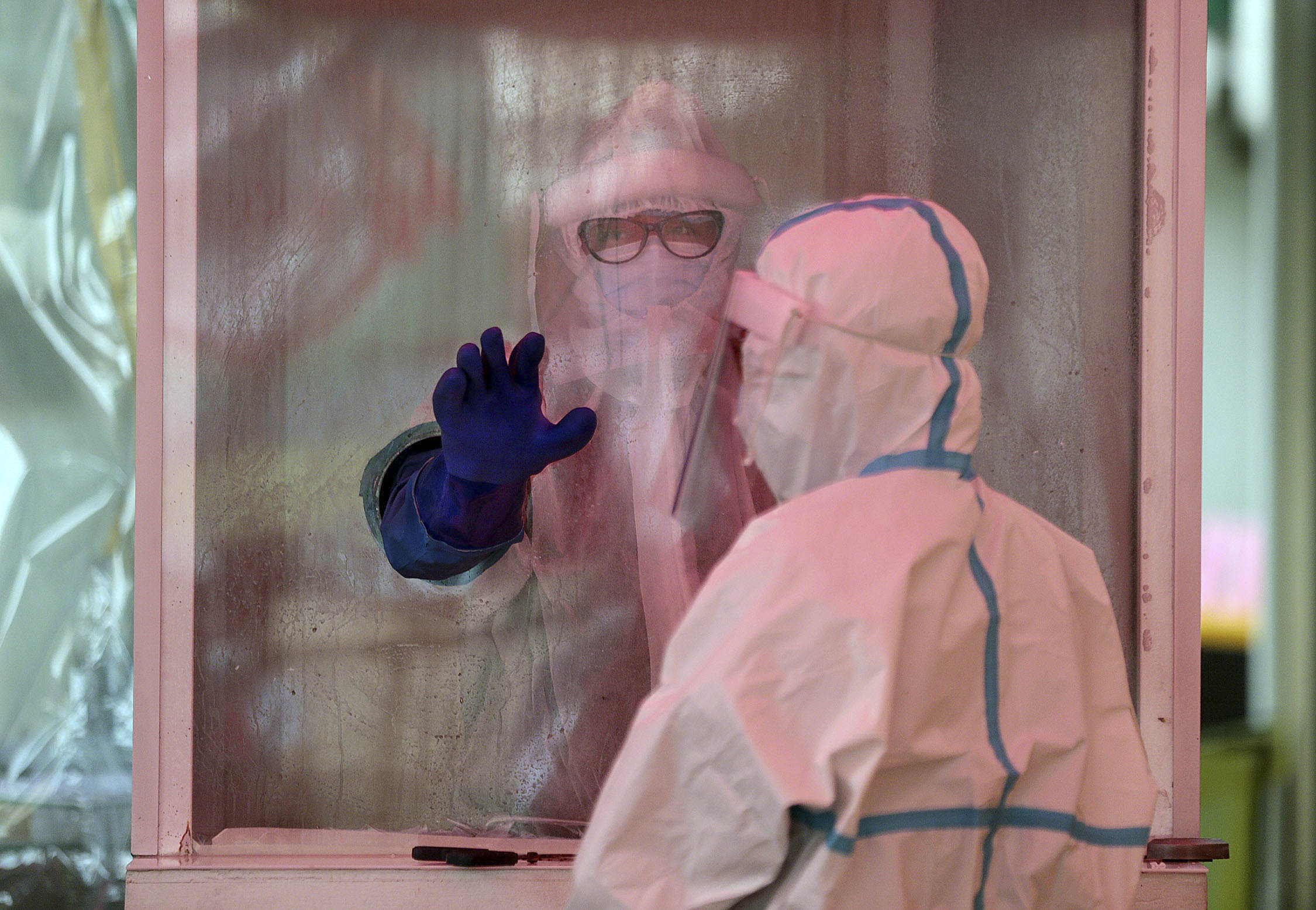PH back to moderate risk classification for COVID-19 case trend

FILE Health workers conduct community based swab testing at the Commonwealth Health Center in Quezon City. INQUIRER PHOTO / GRIG C. MONTEGRANDE
MANILA, Philippines — The country is back at moderate risk classification for COVID-19 case trend after recording an increase in cases in the middle of July, the Department of Health (DOH) reported on Thursday.
Data presented by Health Undersecretary Maria Rosario Vergeire in an online media briefing showed that the country had a one-percent growth rate of cases over the last two weeks, compared to the negative 10 percent growth rate over the last three to four weeks.
The data also showed that the country recorded an average daily attack rate (ADAR) of 4.95 per 100,000 population from the last two weeks or from July 11 to 24, compared to its ADAR of 1.88 from the previous three to four weeks or from June 27 to July 10.
On July 1, the DOH said the country is already at low risk classification for COVID-19 case trend after recording a negative growth rate in cases and a lower ADAR.
LOOK: DOH data shows the country is back to moderate risk classification for COVID-19 case trend. @inquirerdotnet pic.twitter.com/YGaxNKpgJe
— Cathrine Gonzales (@cgonzalesINQ) July 29, 2021
According to DOH, the healthcare utilization rate (HCUR) in the country was at 48.96 percent, while its intensive care utilization rate (ICUR) was at 58.64 percent as of July 28. Both the HCUR and ICUR are at low risk classification.
Article continues after this advertisementVergeire said an “increase was observed in mid-July after a slowdown in cases.”
The country reported an average of 6,029 COVID-19 cases per day from July 22 to 28, 5,576 cases from July 15 to 21, 5,057 cases from July 8 to 14, and 5,372 cases from July 1 to 7, the DOH data showed.
According to Vergeire, the country is showing an increase in cases but Mindanao was exhibiting signs of plateau. She added that Cordillera Administrative Region (CAR), Western Visayas, and Davao Region have high risk ADAR.
In Metro Manila, an average of 1,013 new cases were recorded from July 22 to 28, an increase of 782 average cases from July 15 to 21.
For the entire Metro Manila, HCUR and ICUR are still at low risk levels but signs of increase were noted in recent days, said Vergeire.
Meanwhile, Cavite, Laguna, Rizal and Bulacan—all part of the NCR Plus—are showing a slow increase in cases.
Upward trend of cases was however observed in Ilocos Region, Cagayan Valley, and Central Luzon, while a downward trend is seen in Mimaropa and Bicol Region, but case trend in CAR and Calabarzon is plateauing.
A “steep rise” in cases was observed in Central Visayas, while case trend in Western and Eastern Visayas is decreasing.
In Mindanao, an upward trend of cases was noted in Northern Mindanao, cases are plateauing in Soccsksargen, and all other regions are exhibiting a decline in cases.
The country has 54,552 active cases of COVID-19 as of Wednesday.